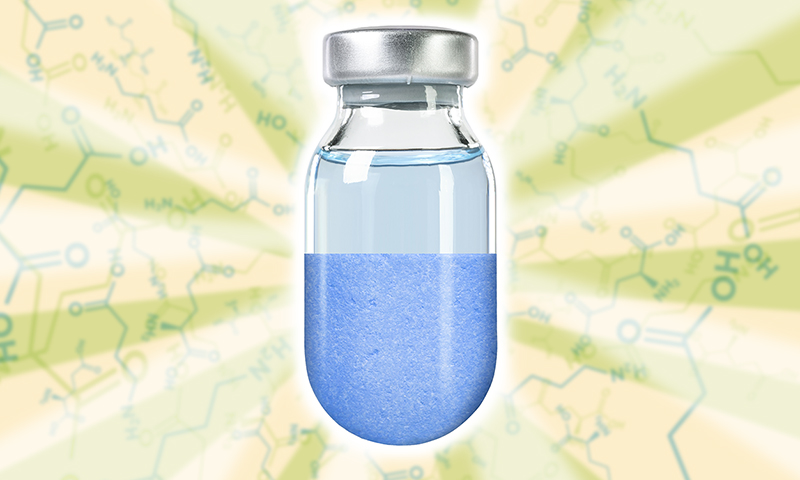

Below, you’ll find some of the 2023 highlights of the research done by faculty and staff at Children’s of Alabama and the University of Alabama at Birmingham (UAB). For a look at the full scope of our research, check out our Academic Annual Report or visit Insidepeds.org.

In 2023, the University of Alabama at Birmingham (UAB) Department of Pediatrics welcomed Rintaro Hashizume, M.D., Ph.D., a scientist specializing in pediatric neuro-oncology. Hashizume, an associate professor of hematology and oncology, brings a commitment to pediatric brain tumor research, focusing specifically on the daunting challenge presented by diffuse intrinsic pontine glioma (DIPG), an aggressive brain tumor that primarily affects children and has a grim prognosis, with most patients succumbing to the disease within 12 months.
DIPG is challenging because surgery is impractical, and traditional chemotherapy faces significant hurdles in treating it. But Hashizume, through research, has identified another possible method of treatment: intranasal therapy. His team is exploring this option, aiming to use it to enhance the effectiveness of radiation therapy for the treatment of DIPG.
While emphasizing the importance of mechanistic research, Hashizume acknowledges the urgency of translating discoveries into clinical applications. He envisions intranasal delivery becoming a feasible option for clinical trials, stressing the need for a swift transition from preclinical studies to clinical trials, especially considering the critical nature of pediatric brain tumors.

Could an over-the-counter supplement help save insulin production in new-onset type 1 diabetes? That’s the question pediatric endocrinologists Gail J. Mick, M.D., Kenneth McCormick, M.D. (now retired) and colleagues at Children’s of Alabama set out to explore. The answer, according to their recently published article in the journal Nature Communications, is, quite possibly.
The study explored the potential of the amino acid gamma-aminobutyric acid (GABA), found in health food stores, and glutamic acid decarboxylase (GAD), an enzyme that acts on glutamate to form GABA, to preserve pancreatic islet function.
GABA is an important neurotransmitter in the brain. However, it is also critical to insulin production, with GABA receptors found within the islet beta cells responsible for insulin production. Meanwhile, GAD converts abundant circulating glutamate from dietary protein and intestinal microbiota into GABA.
The study randomized 97 children (average age of 11) within five weeks of their diagnosis to oral GABA with or without a GAD-alum injection. Although it didn’t meet its primary goal of preserving beta cell insulin production, the GABA/GAD combination significantly reduced glucagon levels, improving blood sugar levels. The study also found lower levels of the inflammatory cytokine expression implicated in the pathogenesis of type 1 diabetes. There were no adverse effects.

In May 2023, the World Health Assembly (WHA) adopted a resolution to embrace micronutrient fortification including folic acid to prevent spina bifida. The resolution was put together in part by the Global Alliance for the Prevention of Spina Bifida, or GAPSBiF, an organization co-founded by Children’s neurosurgeon Jeffrey Blount, M.D. MPH. Blount and others established GAPSBIF in 2019 to increase awareness and advocate for the prevention of spina bifida through large-scale food fortification with folic acid. The WHA’s adoption of this resolution—which was the assembly’s first surgeon-led initiative—shows that GAPSBIF is already affecting change on a global scale.

On a trip to Vietnam in September 2023, a team of neurosurgeons from Children’s performed subdural grid electrode implantations—procedures designed to pinpoint where seizures are occurring. These were the first procedures of their kind ever performed in Vietnam.
It’s the latest achievement in Vietnam for the team, which includes pediatric neurosurgeon Brandon Rocque, M.D., pediatric epilepsy surgery director Pongkiat Kankirawatana, M.D., and director of neurophysiology Trei King, BA, R.EEG.T, CNIM, who, prior to the COVID-19 pandemic, visited the country annually to provide hands-on training at hospitals in Hanoi and Ho Chi Minh City. Their trip in the fall was their first since before the pandemic.
The grid implantations, performed in two pediatric patients, received national media coverage, triggering requests from families throughout the country. “It opens up the possibility of many more patients getting treated,” Rocque said.
Their efforts are desperately needed in a country with just two adult and two pediatric neurosurgery training programs for its 95 million people and only six pediatric neurosurgeons serving a population of more than 50 million in the northern part of the country.

In March 2023, the U.S. Food and Drug Administration approved the first treatment for Rett syndrome, a rare neurological disease. Considered a major breakthrough, the new drug, called trofinetide, or Daybue, may never have made it to market without the groundbreaking work of Children’s of Alabama pediatric neurologist Alan Percy, M.D.
Percy is one of the leading Rett syndrome experts in the world. He diagnosed the first patient with the disease in the U.S. and led a multicenter, National Institutes of Health-funded study on its natural history. He now co-leads, with Amitha Ananth, M.D., the Children’s of Alabama/University of Alabama at Birmingham (UAB) Child Neurology Rett Syndrome Clinic, one of the largest in the country and one of just 15 centers of excellence in Rett syndrome in the country.
“The availability of this medication is a game-changer in our efforts to treat this disorder directly, rather than only treating the specific problems that may arise,” Percy said. “It is remarkable that this treatment emerged less than 40 years after Rett syndrome first became known throughout the world.”